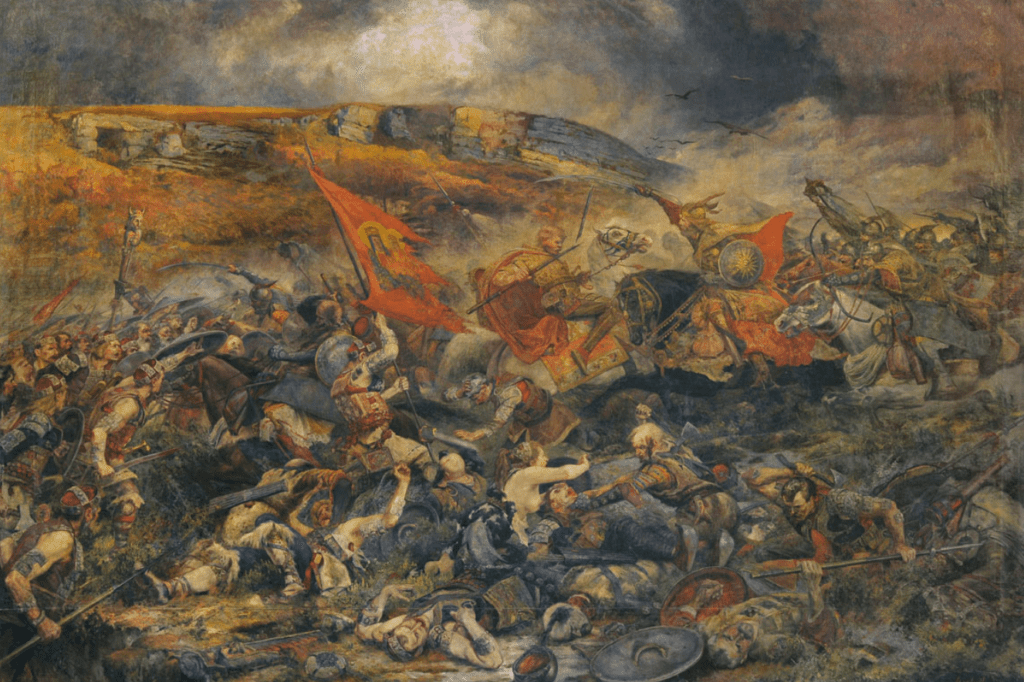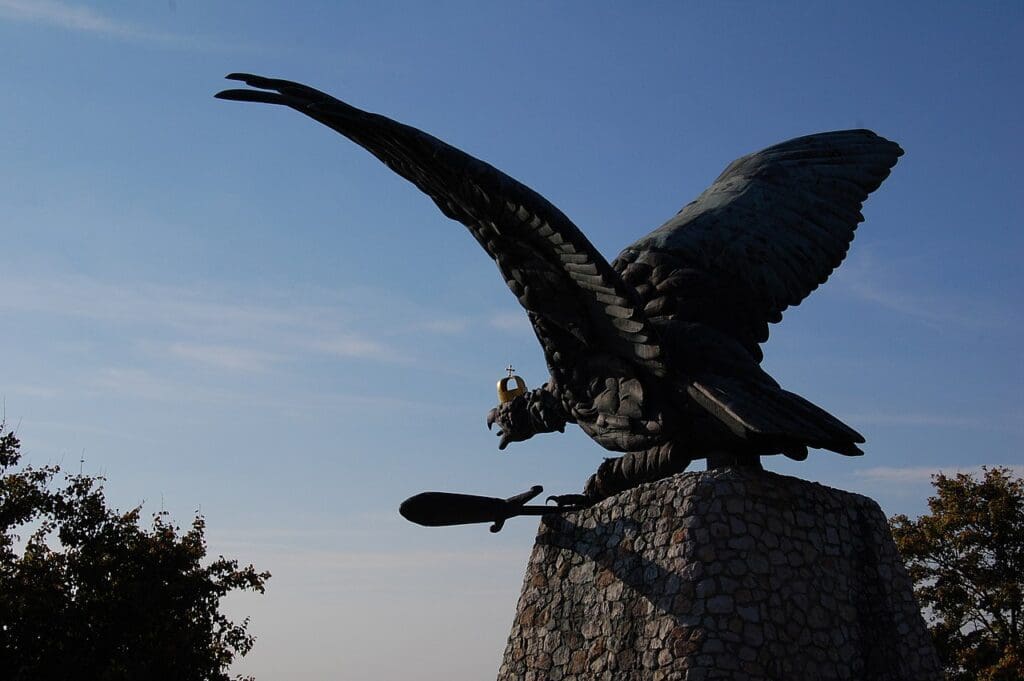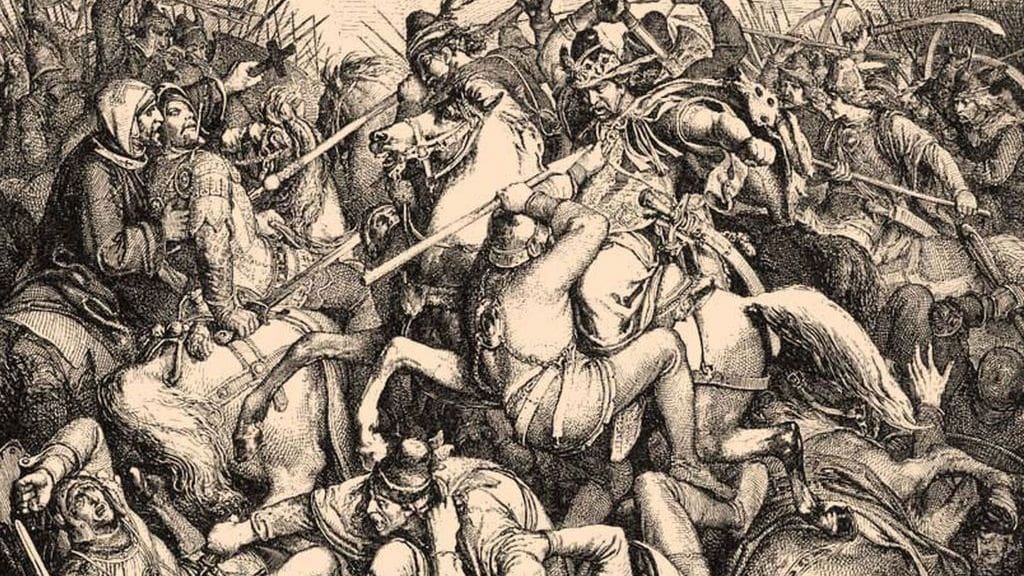There are rather few countries where a battle that took place more than 1,100 years ago can still arouse real social interest, where the newspapers write about the animated film about the event for weeks, and where the opposing political camps find it necessary to express their opinions about it, too. Yet this is the case in Hungary, where the memory of the Battle of Pressburg has been constantly present in public life since 2007, the anniversary of the clash. But what exactly happened in July 907?
In the first years of the 10th century, the Hungarians, among other territories, took possession of the western part of the Carpathian basin as well, capturing Pannonia from the Kingdom of the East Franks. The slightly delayed German attack was launched only in the summer of 907 when the Magyar army inflicted a crushing defeat on the forces of the East Frankish King Louis the Child (r. 900–911) in the first days of July near Pressburg (in Hungarian, Pozsony, the present-day Bratislava, Slovakia).
The question may rightly arise as to what contemporary sources preserved about the battle. Unfortunately, there are shockingly few reports about the event, which describe the Germans’ catastrophic defeat and the fall of their leader, the Bavarian Marquis, only in a few words. In contrast, church sources are somewhat more detailed, as they also report on the death of the archbishop of Salzburg and two other bishops. The significance of the battle may also be inferred from the rank of those who were killed in it: an entire imperial army was defeated. However, we do not know whether Hungarian Grand Prince Árpád died there as well, as it is only mentioned in another Hungarian source centuries later.[1]
Placing the battle in the series of clashes of the time, there is no doubt that
it ended the Hungarian conquest of the Carpathian Basin,
since following the overwhelming Hungarian victory, the Frankish–German kings took note of the possession of the Carpathian basin by the Hungarians, and for more than a hundred years they did not launch another attack against them. At the same time, the victory also provided a way to Western Europe for the Hungarian raids that lasted for half a century.
A no less difficult question of the story is where did it actually take place? It would be easy to answer that it was in today’s Bratislava, but all but one of the contemporary texts make no mention of the location at all, which has caused the biggest complexities regarding the afterlife of the battle. In a manuscript from 1921, the location of the battle is referred to as Brezalauspurc, meaning ‘at the castle of Braslaw’. The question is, if the castle of the eponymous Slavic leader Braslaw, the Frankish vassal, was in the village of Zalavár near Lake Balaton, how did today’s Bratislava get its name? What is certain is that 150 years later Bratislava was already referred to by its present name, and not by Pressburg. Nevertheless, contemporary researchers commonly agreed to localise the battle near present-day Bratislava.
After the battle, hundreds of years passed before a historian noticed the importance of the event and recognised its decisive historical significance: it was the famous Bavarian humanist Aventinus who first wrote at length about the Battle of Pressburg in the early 1500s.[2] His portrayal of the events was so successful that his work was used as the most authentic description of the battle until the 20th century. However, the birth of modern critical historiography at the turn of the century set the assessments of the battle in a different direction, as the source value of the chronicles written by scholarly humanists was increasingly challenged. By 1900, Gyula Pauler, the director of the Hungarian National Archives, dismissed the previous location of the battle and rather opted for Bánhida, a village located in the middle of Transdanubia.[3] Bánhida is a well-known site of early Hungarian history: according to the 13th-century chronicler Simon of Kéza, Grand Prince Árpád defeated Svatopluk I of Moravia (r. 870–894) there, but later it was thought that the Hungarian chronicler mixed up the names and was actually referring to the Battle of Pressburg instead.
In 1896, the country celebrated the millennial anniversary of the Hungarian conquest of the Carpathian Basin.

As the only historian member of the official commemoration committee, Kálmán Thaly personally selected the locations of the commemorative columns depicting the mythological Turul bird, a national symbol of Hungarians, corresponding to the number of the seven chieftains of the Magyars. Thaly connected the foundation of the Benedictine Pannonhalma Archabbey with the Battle of Bánhida/Pressburg; therefore, he proposed to erect the monument of the battle in Pannonhalma, which was finally built consciously oriented in the direction of Bánhida. In it, Grand Prince Árpád was depicted riding up to the Holy Mountain and taking possession of Pannonia after the Battle of Bánhida. However, Thaly’s decision did not convince everyone, and a few years later another memorial was inaugurated at Bánhida in July 1907, on the anniversary of the battle. The huge Turul Monument, 20 meters high and 14 meters wide, still stands in its original place to commemorate the conquest of the country. In Hungarian painter Árpád Feszty’s 1898 painting titled Árpád’s Victory over Svatopluk at Bánhida, Grand Prince Árpád wearing the sun symbol defeats the Moravian army led by Svatopluk waving the flag of the Virgin Mary. Today, we already know that chronicler Simon of Kéza dreamed up the Battle of Bánhida under the influence of the Roman ruins found in Transdanubia, and thus it became part of the world of fiction once and for all.
After 1945, however, the official Hungarian historiography only briefly and incidentally remembered the Hungarian victories of the 10th century for a long time, since they did not fit into the class-oriented Marxist ideology. In fact, the critical voices that intensified in the 1990s were right: the memory of the Battle of Pressburg was almost completely forgotten by then, despite the fact that until the 1890s it was one of the most-talked-about and depicted victorious Hungarian battles.

After the birth of democratic Hungary, more and more people demanded a worthy celebration and historical re-evaluation of the Battle of Pressburg. The call of the forgotten victory in today’s Bratislava brought together the most diverse groups of amateur traditionalists. The battle has proven to be largely suitable for harassing the representatives of ‘official’ science: the question arose as to why is it that the Battle of Pressburg is the least-talked-about among the not-too-many victorious battles of medieval Hungarian history. In the 1990s, the idea of ‘rehabilitating’ the battle came up repeatedly,
but the decisive impetus came in 2007, the 1,100th anniversary of the clash.
The most spectacular event of this was the International Lower Austrian Provincial Exhibition in 2007 in Hainburg near Bratislava. Thanks to the exhibition, archaeologists and historians have generally voted in favour of Pressburg as the location of the battle.[4] The Institute of History of the Hungarian Academy of Sciences in Budapest could not stay out of the ‘rehabilitation process’ either: one of the issues of the then-existing periodical História was also dedicated to the memory of the battle. In 2008, a 250-page study volume[5], and in 2018, a rock opera, as well as various novels and poetic epics were published about the battle. In 2020, an animated film was also made about the event under the auspices of the newly founded Hungarian Research Institute, which received great press coverage. At the time, it was seriously considered that the day of the battle should become a national day of remembrance.
The celebration of the Battle of Pressburg quickly found its way to the general public after 2007, fuelled mostly by the image suggested by traditionalists and the experience of belated access to a hidden spiritual–historical heritage. Thus, for years, a historical horse-riding pilgrimage was organised from Verecke Pass in Ukraine (the starting point of the conquest) to Dévény near Bratislava. Another central event is the meeting of archers held at the mythical site of Hungarian history, Ópusztaszer, where hundreds of traditionalists remember the battle of 907 with hails of arrows and by re-enacting the events from time to time. The rapidly growing number of monuments, statues, and memorial columns in the country today also indicates the real social power of traditionalist groups.
Although there were a few attempts to do so, amateur art enthusiasts did not manage to appropriate the battle as their own. In the last decade, archaeological, archaeogenetic, and historical research into the prehistory and early history of the Magyars has produced results not seen in a long time.[6] The Battle of Pressburg, which often provoked extreme reactions and became a real media event, also played a decisive role in this—of course, in a positive sense.
[1] Béla Miklós Szőke, Die Karolingerzeit in Pannonien,Mainz, 2021, pp. 295–301.
[2] Gerald Strauss, Historian in an Age of Crisis. The Life and Work of Johannes Aventinus, 1477–1534, Cambridge/Mass, 1963.
[3] Gyula Pauler, A magyar nemzet története Szent Istvánig, Budapest, 1900, pp. 45–46.
[4] Roman Zehetmayer (ed.), Schicksalsjahr 907. Die Schlacht bei Pressburg und das frühmittelalterliche Niederösterreich, St Pölten, 2007.
[5] László Veszprémy and Béla Torma (eds.), Egy elfeledett diadal. A 907. évi pozsonyi csata, Budapest, 2008.
[6] Attila Türk and Emese Polónyi, ‘The latest results of archaeological research on the early history of the Hungarians’, Pontica, Vol. 55, 2022, pp. 10–12.
Related articles:








